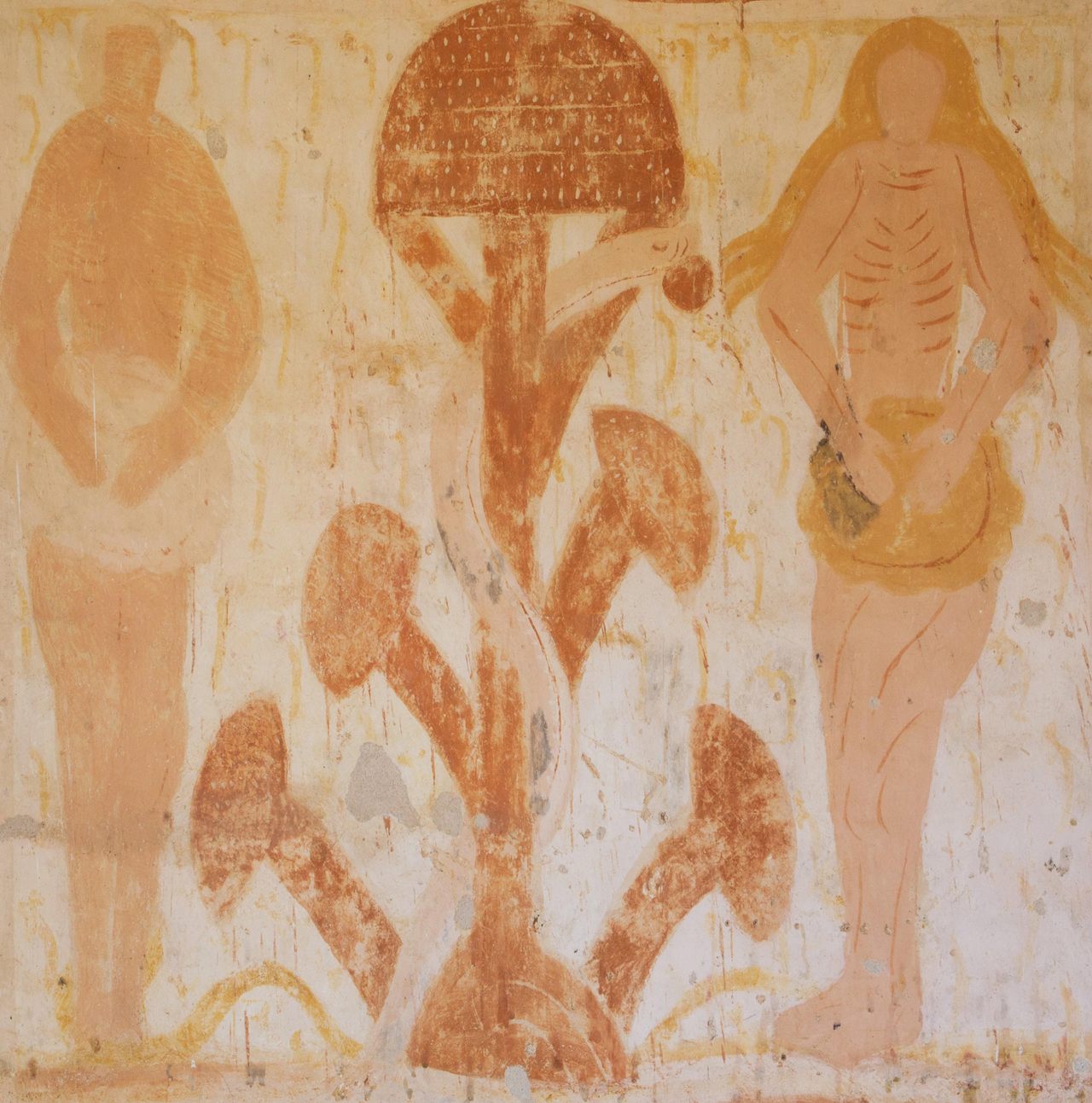
Historical research reveals psychoactive substances to have been in use longer than most of us would assume. But did Adam and Eve do mushrooms in the Garden of Eden? Unsurprisingly, that question is fraught on more than one level. But if you wish to believe that they did, spend some time with the thirteenth-century artwork above, known as the Plaincourault fresco. In it, writes Atlas Obscura’s Emma Betuel, “Adam and Eve stand in the Garden of Eden, both of them faceless.” Between them “stands a large red tree, crowned with a dotted, umbrella-like cap. The tree’s branches end in smaller caps, each with their own pattern of tiny white spots” — just like you’d see on certain species of fungus. “Tourists, scholars, and influencers come to see the tree that, according to some enthusiasts, depicts the hallucinogenic mushroom Amanita muscaria.”
This image, more than any other piece of evidence, supports the theory that “early Christians used hallucinogenic mushrooms.” Supports is probably the wrong word, though there have been true believers since at least since 1911, “when a member of the French Mycological Society suggested the thing sprouting between Adam and Eve was a ‘bizarre’ and ‘arborescent’ mushroom.” The video essay just below, “Psychedelics in Christian Art,” presents the cases for and against the Tree of Life being a bunch of magic mushrooms. It comes from Youtuber Hochelaga, whose videos previously featured here on Open Culture have covered subjects like the Voynich Manuscript and the Biblical apocalypse. This particular episode comes as part of a miniseries on “strange Christian art” whose previous installments have focused on hellmouths and the three-headed Jesus.
Nevertheless, Hochelaga can’t come down on the side of the mushrooms-seers. Similar vegetation appears in other pieces of medieval art, but “in reality, these are drawings of trees, rendered with strange forms and bright colors,” as dictated by the relatively loose and exaggerated aesthetic of the era. But that doesn’t mean the Plaincourault fresco has nothing to teach us, and the same holds for other “psychedelic” Christian creations, like the paintings of Hieronymus Bosch or the art-inspiring music of Hildegard von Bingen. Judging by the investigations this sort of thing has inspired — Tom Hatsis’ “The Psychedelic Gospels, The Plaincourault fresco, and the Death of Psychedelic History,” Jerry B. Brown and Julie M. Brown’s Journal of Psychedelic Studies article “Entheogens in Christian Art: Wasson, Allegro, and the Psychedelic Gospels” — the relevant history constitutes quite a trip by itself.
Related Content:
The Drugs Used by the Ancient Greeks and Romans
Algerian Cave Paintings Suggest Humans Did Magic Mushrooms 9,000 Years Ago
A Survival Guide to the Biblical Apocalypse
The Meaning of Hieronymus Bosch’s The Garden of Earthly Delights Explained
Michael Pollan, Sam Harris & Others Explain How Psychedelics Can Change Your Mind
Based in Seoul, Colin Marshall writes and broadcasts on cities, language, and culture. His projects include the Substack newsletter Books on Cities, the book The Stateless City: a Walk through 21st-Century Los Angeles and the video series The City in Cinema. Follow him on Twitter at @colinmarshall or on Facebook.


Leave a Reply